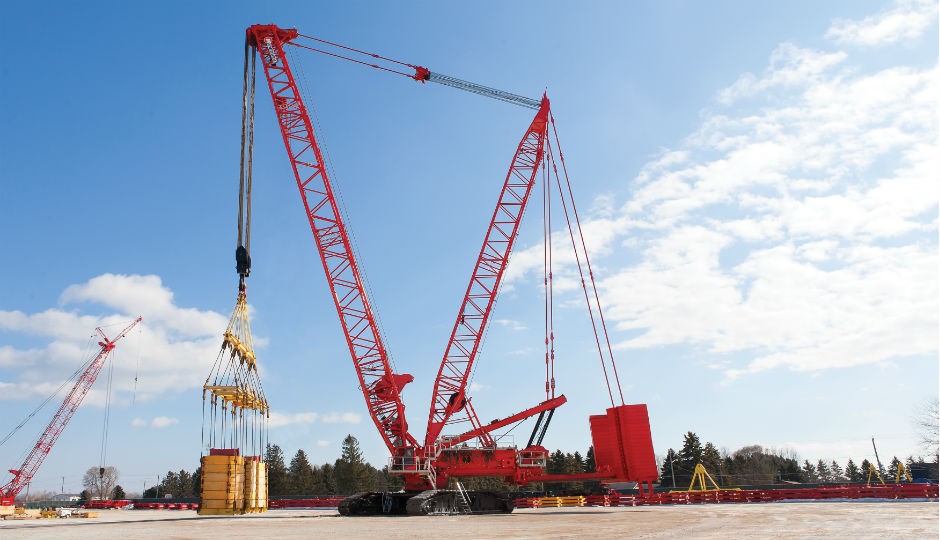Manitowoc MLC650 successfully completes load test

The Manitowoc MLC650 crawler crane has successfully completed the required load test to validate its maximum lifting capacity. The crane lifted 650 t (717 USt) of test weights, making the crane’s advertised capacity official.
Dustin Soerens, marketing manager for lattice cranes at Manitowoc, said the test went as expected.
“The lift went very smoothly. It was a momentous occasion for everyone at Manitowoc that has worked so hard to make this crane a reality,” he said. “A large group of engineers witnessed the test lift and were very pleased with how the crane performed under load.”
The MLC650 is on schedule and working perfectly, which means it’s only a matter of time before the crane is ready for the global market. It has a 104 m (341 ft) maximum main boom length and a luffing jib that can be added to reach a maximum combination of 157 m (515 ft).
“This crane also features the innovative Variable Position Counterweight (VPC) technology, which worked perfectly to position the counterweight for each of the load scenarios,” he said.
The VPC system automatically positions the counterweight to fit the required lift. Advantages for customers include reduced ground preparation, lower ground-bearing pressure and less counterweight, all without sacrificing capacity. Also, customers will not have to buy, transport or install as much counterweight compared with a traditional configuration.
“We performed a max load test, a max moment test and a variety of lifts utilizing different positions of the VPC, and they all were completed flawlessly,” Soerens said.
The crane was fitted with hundreds of strain gauges that measured the tension and compression of the steel components of the crane while lifting. For the max load moment test, the crane was positioned to apply the maximum stresses through the structure, such as the boom positioned over the corner of the crawler crane.
“The successful completion of the max loading tests is a positive sign that the rest of the structural testing will go smoothly,” he said. “Typically, if any major design changes would be required, they’re found during the max load test. We can now rest assured that we’re well on our way to releasing this innovative crane to the global market.”


